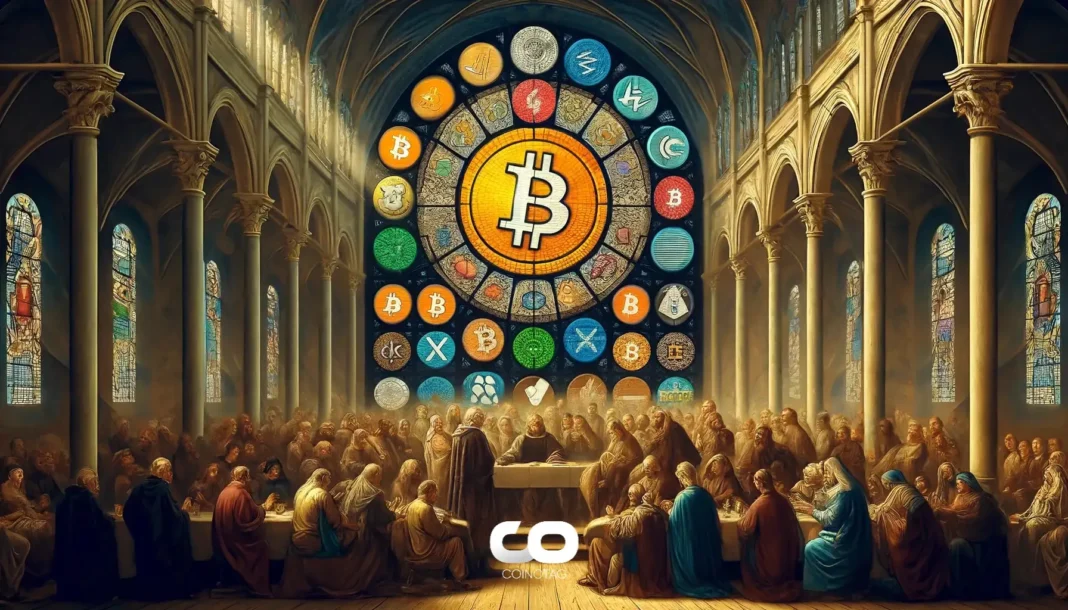-
Plasma’s recent stablecoin deposit vault attracted an astonishing $500 million in mere minutes, signaling a potential revival of ICO-style fundraising in the crypto space.
-
One trader notably paid over $100,000 in priority fees to secure an early position, highlighting intense competition and network congestion during the sale.
-
According to COINOTAG sources, this surge in demand reflects renewed investor enthusiasm for stablecoin-focused blockchain projects amid growing regulatory clarity and market maturation.
Plasma’s $500M stablecoin deposit vault sale reignites ICO excitement, driven by high demand and priority fee bidding, marking a new chapter for crypto fundraising.
Plasma’s Stablecoin Vault Raises $500 Million in Minutes, Reviving ICO Momentum
On June 9, 2025, Plasma’s public sale vault rapidly amassed $500 million in stablecoin deposits, oversubscribed by a factor of ten within just five minutes. This unprecedented speed underscores a renewed appetite for initial coin offering (ICO) style events, particularly those centered on stablecoins. Plasma, a Bitcoin sidechain designed to optimize stablecoin transactions by leveraging Bitcoin’s settlement layer, is auctioning 10% of its XPL token supply through the Sonar platform. Despite the overwhelming deposit volume, only $50 million worth of tokens will be sold, with participants retaining the flexibility to withdraw funds or earn yield while awaiting the sale. This innovative approach blends traditional ICO mechanics with enhanced investor protections, reflecting lessons learned from the 2017 ICO boom.
Priority Fees and Gas Wars Highlight Network Congestion During Sale
The intense competition to secure a place in the Plasma vault triggered a gas fee bidding war on the Ethereum network. One trader paid a staggering 39.15 ETH (over $100,000) in priority fees to expedite a $10 million USDC deposit, exemplifying the lengths investors are willing to go to gain an advantage. Such “gas wars” are reminiscent of the 2017 ICO frenzy and the NFT market peaks of 2021-22, where high transaction fees became a barrier to entry for retail participants. However, analysis of Etherscan data reveals that most top depositors paid significantly lower fees, suggesting that while some participants overspent, the majority balanced cost and urgency effectively. This dynamic highlights the ongoing challenges of scalability and fee volatility in Ethereum-based token sales.
Stablecoins at the Forefront: Regulatory Developments and Market Impact
Stablecoins continue to solidify their role as foundational assets within the crypto ecosystem. Backed by traditional currencies like the U.S. dollar, these tokens facilitate seamless trading and liquidity management. The U.S. Senate’s consideration of the GENIUS Act aims to establish a clear legal framework for stablecoin issuance, potentially enhancing market stability and investor confidence. Concurrently, Circle’s USDC token has demonstrated robust growth, with its recent NYSE listing surging past initial offering prices. Plasma’s focus on stablecoin infrastructure aligns with this broader trend, positioning itself as a key player in the evolving regulatory and market landscape.
Market Sentiment and the Return of ICO-Style Fundraising
Industry commentators and traders have interpreted Plasma’s rapid vault fill as a signal that ICOs are making a comeback. Pseudonymous voices on social media describe this event as a “meta shift” and the “most impactful crypto-native release of 2025.” Investment professionals like Victor Teixeira of Contango Digital Assets draw parallels between the current hype surrounding meme coins and the 2017 ICO boom, noting that retail investors continue to seek high-reward opportunities despite inherent risks. The Plasma sale’s structure, combining product utility with speculative demand, may represent a more sustainable model for future token offerings, balancing excitement with tangible value propositions.
Concerns Over Whale Dominance and Participation Diversity
Despite the enthusiasm, some market participants have expressed concern over the concentration of deposits. Data shows that the top 10 contributors accounted for 40% of the total vault deposits, indicating significant whale participation. While 1,108 wallets participated, averaging over $450,000 each, a notable subset of 141 traders contributed less than $1,000, suggesting a mixed but skewed distribution of investment sizes. This concentration raises questions about equitable access and the potential influence of large holders on token distribution and price dynamics post-sale.
Looking Ahead: Potential Implications for Crypto Fundraising and Market Dynamics
No official date has been announced for the actual XPL token sale, but the overwhelming demand for the deposit vault may encourage other projects to explore similar fundraising mechanisms. If this trend continues, the crypto market could witness a resurgence of ICO-style events, adapted to current regulatory and technological contexts. Investors and developers alike should monitor these developments closely, as they may herald a new phase of capital formation and innovation within the blockchain space.
Conclusion
Plasma’s $500 million stablecoin deposit vault exemplifies a significant moment in crypto fundraising, blending the excitement of ICOs with modern safeguards and stablecoin utility. While network congestion and whale dominance present challenges, the event underscores a broader market appetite for innovative token sales. As regulatory frameworks evolve and investor interest intensifies, this could mark the beginning of a renewed ICO cycle, offering fresh opportunities for both retail and institutional participants in the crypto ecosystem.






